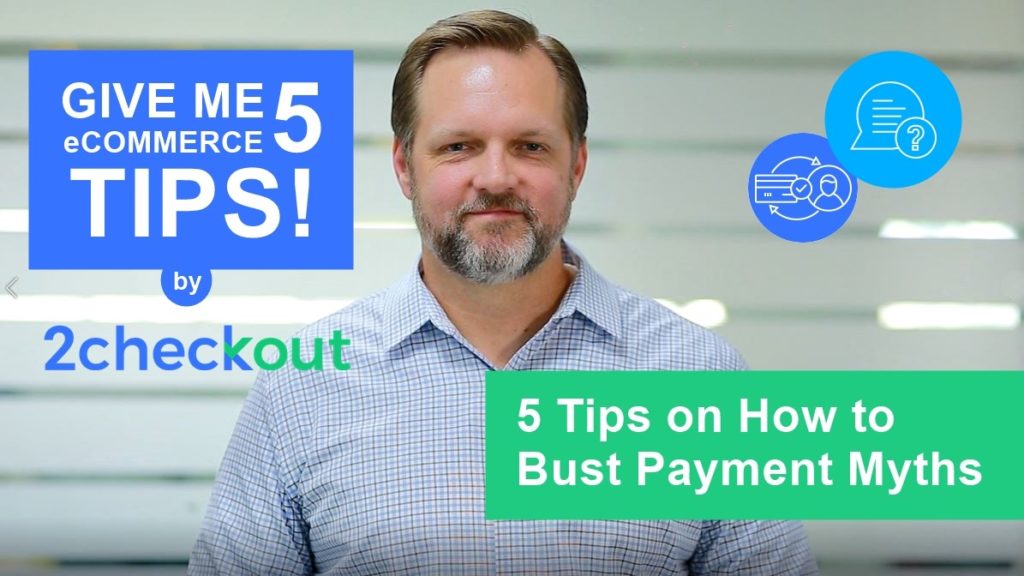Welcome back to our Give me 5! series, where we share 5 useful eCommerce tips that will help improve your strategies and get you on the road to success.
In this episode, we’re going to focus on how to choose the right digital commerce platform for your software & SaaS business.
As customer needs change, companies are evolving to meet them. The increased savviness of customers makes them more discerning and more difficult to sell to, driving the need for more sophisticated commerce and payments solutions.
As a software or SaaS business, deciding what digital commerce platform to use for selling your products or services online is always tough. Fortunately, this video will give you the tools you need to evaluate various types of digital commerce solutions and select the right one for you.
1. Understand the Digital Commerce Technology Stack
The first tip is, you really need to assess what your internal capabilities are in terms of integrating and managing lots of disparate systems.
In order to successfully sell online globally, you have to manage a number of different capabilities from payments, to subscription management, to eCommerce, to marketing.
All of these things need to be managed and so if you use disparate systems for all of these different things you have to integrate them all together and then integrate those into your ERP systems and your CRM applications and that can be quite cumbersome.
If you don’t have a lot of internal capabilities to manage that or you don’t want to deal with all the expense and hassle, you can look for packaged offerings that provide a lot of these capabilities out of the box.
So you really need to assess how much you want to go for best of breed point solutions that you integrate and tie together, or fully packaged offerings.
2. Understand Payment Processing Models
Second, you need to decide what kind of payment model is right for you.
There are two principal kinds of payment models in the industry. One is the Merchant of Record model and the other one is what we call a PSP or Payment Service Provider or sometimes called Payment Facilitator model.
There are many advantages to the Merchant of Record model where the payment processor that you’re using actually serves as the technical Merchant of Record for the transaction.
If you leverage this kind of model you can actually leverage the entire infrastructure that your payment provider has in terms of all of their local entities all over the world, all the local payment methods that they support, without having those entities or bank accounts yourself in any of those jurisdictions.
If you leverage a PSP model, oftentimes you will actually have to set up bank accounts and entities in the local jurisdictions in order to have any kind of local payment methods.
And local payment methods matter because we’ve shown time and time again that conversion rates, authorization rates, all of those go up if you support local payment methods, if you provide shopper support in a native language.
3. Look for a Flexible Solution
Third, you really need to think about how flexible the offerings that you are buying are.
While you might have a concrete strategy today as to how you want to sell and market your products, that might change down the road, and you don’t want to switch out everything in order to do that.
You may decide let’s say, to do one type of subscription model today and then tomorrow you may say we need to pivot and change to maybe a usage-based model.
So you want to make sure that your vendors can support those kinds of changes. Flexibility really is key.
4. Choose a Partner with a Solid Reputation
Fourth, you need to pick a vendor that has a really solid reputation built over years and that has very solid compliance processes and procedures internally.
That spans not just privacy and data security compliance but also if let’s say you’re using the Merchant of Record model and you’re relying on them to do tax remittance and collection, that they have really solid procedures to stay up on those ever-changing tax rules throughout the world.
5. Assess the Additional Costs
Fifth, you need to look at the total cost of ownership of the solutions that you’re selecting. Not just the hard cost quoted to you by your vendors but all of the add-on charges that might be passed on.
Like foreign exchange fees and other charges related to payments, chargeback fees, refund fees, all those kinds of fees add up over time.
Also your internal costs, the costs associated with actually integrating these solutions, managing them internally and providing all the kinds of services that are needed to support the payment.
So make sure you take a really comprehensive look at the full cost of ownership of your solution.
Those are the five tips for how to select a digital commerce solution. Thank you so much for watching! Don’t forget to leave us any questions you might have and see you next time with more eCommerce tips!
Want some extra tips on how to debunk five of the most common payment myths you hear from most payment processors. Then don’t miss out our previous episode!






